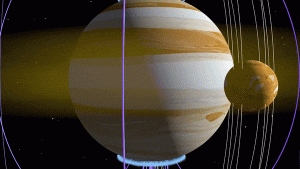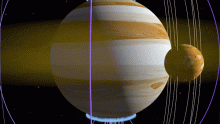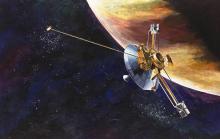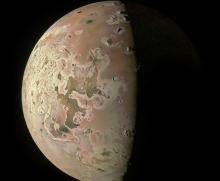This animation depicts Jupiter and its massive radiation belts and magnetic field. The belts are fed by particles from the Sun and from Jupiter's volcanic moon Io. The radiation belts are strong enough to destroy unprotected instruments in hours or even minutes, so spacecraft carry heavy shielding and they avoid the regions with the heaviest radiation dosages. [ESA/ATG medialab]
You are here
Moon and Jupiter
If Earth’s radiation belts were as strong as those of Jupiter, we might never be able to leave our home planet. An astronaut flying through Jupiter’s belts could receive a fatal dose of radiation in just a few hours. And since it took Apollo astronauts longer than that to transit Earth’s belts, they couldn’t have lived through a trip to the Moon and back.
Jupiter is the largest and heaviest planet in the solar system. So perhaps it’s not surprising that it also has the strongest radiation belts. They’re produced by charged particles trapped in Jupiter’s magnetic field, which is also quite strong.
Some of the particles come from the solar wind — a steady flow of material from the Sun. But most of them come from Jupiter’s moon Io. It’s covered by hundreds of volcanoes. They blast sulfur dioxide and other molecules into space. Jupiter’s magnetic field rips the molecules apart, giving them an electric charge. It also accelerates them to extremely high speeds — turning them into “bullets” that could be deadly to any human visitors.
They’re not good for robots, either. The belts are especially strong around Jupiter’s equator, in the realm of the closest moons — just the region scientists want to study. So sensitive instruments need good shielding, such as lead boxes, to keep them safe.
Jupiter is close to the right of the gibbous Moon as darkness falls tonight. It looks like a brilliant star.
Script by Damond Benningfield
Get Premium Audio
Listen to today's episode of StarDate on the web the same day it airs in high-quality streaming audio without any extra ads or announcements. Choose a $8 one-month pass, or listen every day for a year for just $30.






